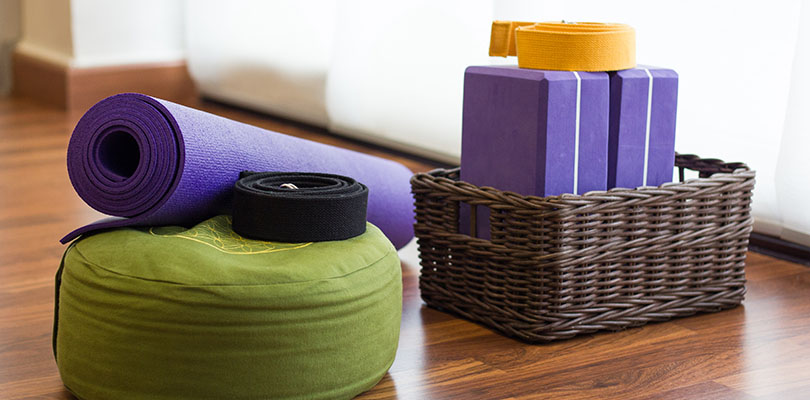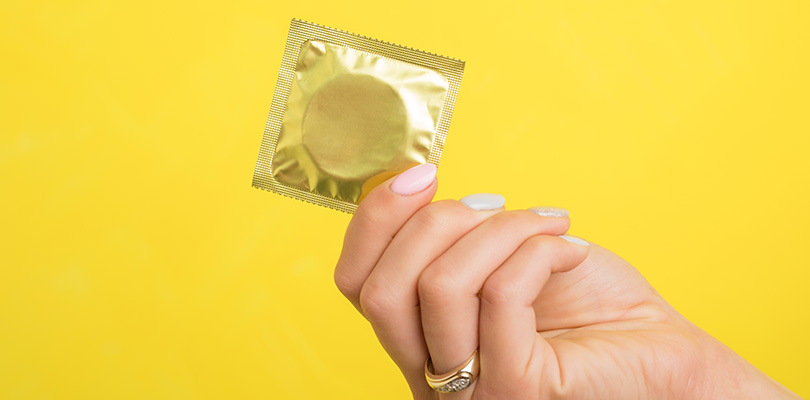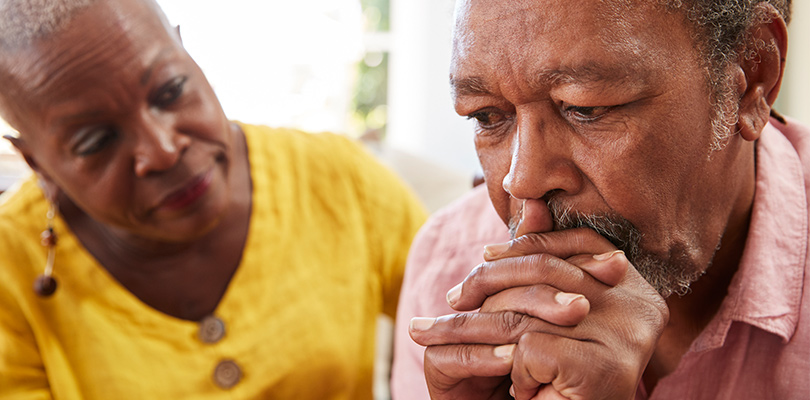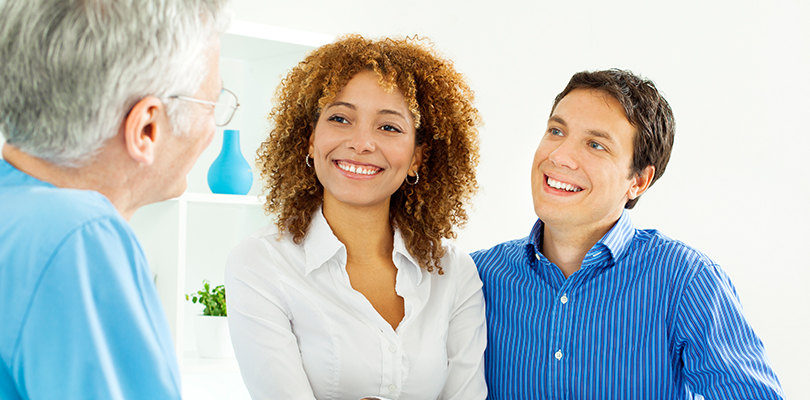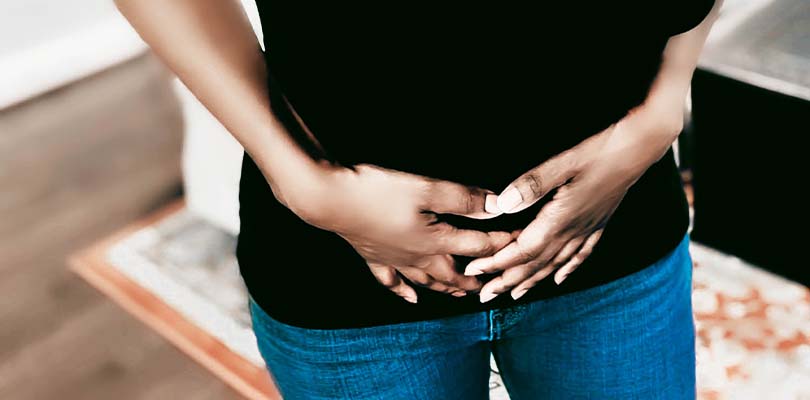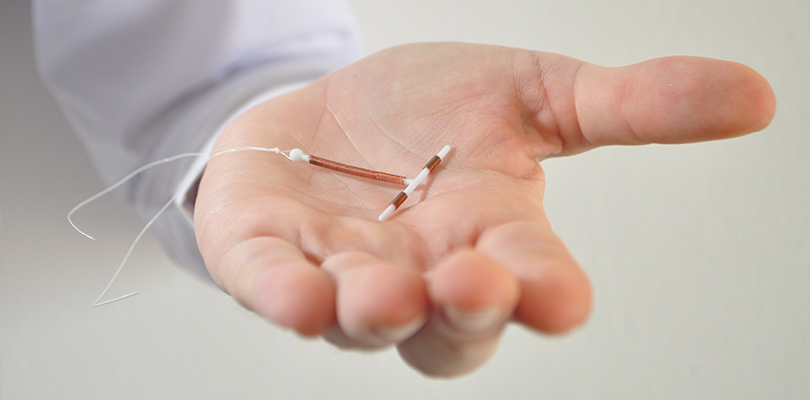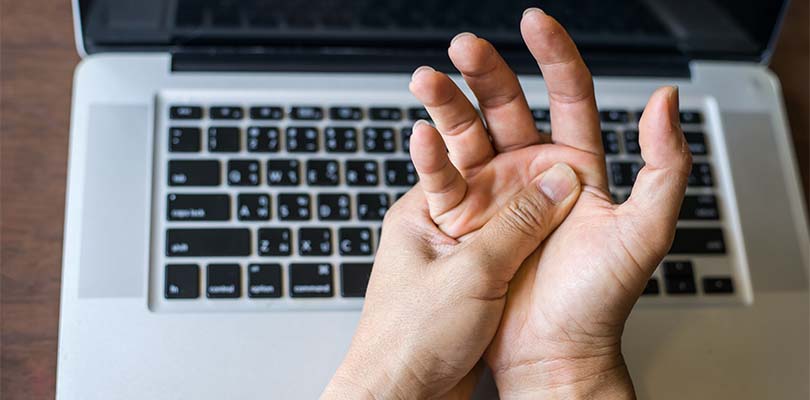Pilates Equipment for Beginners
Pilates is a form of exercise which is often done on a mat, using your own body weight to increase strength and flexibility. However, there are also a number of useful tools which can make the exercises more manageable for beginners while offering greater resistance from experienced practitioners.
1. Pilates Reformer
The Pilates reformer is probably the best known of all the Pilates tools, and reformer classes are some of the most popular out there.
The Pilates reformer looks a bit like a low bed made from wood, plastic or aluminum. The top surface consists of a padded platform, mounted on wheels. This is known as the carriage.
The carriage is attached to the frame with springs at one end which increase the resistance as you slide it back and forth. More springs can be used if you wish to increase the resistance further. At one end of the carriage is a shoulder block and at the other a foot bar.
These keep your body in the correct position on the carriage as you exercise. The Pilates reformer also has the option to attach straps so that both pushing and pulling exercises can be performed.
Exercises can be carried out in standing, sitting and lying positions, making the Pilates reformer a highly versatile piece of equipment.
Added resistance helps to improve strength and flexibility, while the shape of the reformer reduces the strain put on your joints during exercise. This makes the reformer an ideal piece of equipment for beginners or those recovering from injuries.
Pilates reformers are usually found in gyms and physical therapist’s offices. If you would like to install one at home, then you will need to purchase it from a specialist store online.
2. Pilates Chair
There are many designs of Pilates chair now available, but the most popular has to be the Wunda Chair. It was invented by Joseph Pilates in the early 20th century, and all modern Pilates chairs have evolved from this original design.
A Pilates chair is a box-like seat with a pedal on springs attached to the bottom of one side. This pedal is used to provide extra resistance while exercising and some even come in two parts so that you can exercise your right and left sides independently. Some chairs also have the option to attach handles to the sides to increase the range of exercises which you can use it for.
Exercises can be performed sitting, lying or standing, making the Pilates chair a great all-rounder. It is especially suitable for anyone wanting to focus on their core muscles, arms, and legs.
Another advantage of the Pilates chair is that it is far more compact than the reformer, making it an ideal solution if space is limited. It is also slightly more affordable than the reformer and can be found in specialist stores online.
3. Pilates Barrel or Pilates Arc
A Pilates barrel or arc is a piece of equipment which can be used to enhance mat exercises, especially those aimed at increasing the flexibility of the spine. They come in a number of different shapes and sizes which are designed to fit people of various heights.
A Pilates barrel or arc is a wooden block with a distinctive curved top which gives it its name. It is used to target the core muscles while lengthening and stretching the spine.
There are several different designs. Some comprise of a straightforward arc, available in different sizes. The step barrel has an extra groove and flare, making it possible to perform a wider variety of exercises.
The ladder barrel is the same shape as the step barrel, but has the addition of a short ladder at one end, again increasing its versatility.
Barrels and arcs are designed to challenge the postural muscles and increase spinal flexibility. In fact, they are also sometimes known as “spine correctors” in Pilates circles. They allow the head and neck to hang in an upside-down position while supporting the arch of the back.
Barrels and arcs are ideal if you are recovering from, or trying to prevent back pain. Like the reformer and Pilates chair, you will need to purchase this from a specialist store.
However, you should take extra care if you have injured your back, and be sure to use the correct shape and size barrel or arc as recommended by a trained professional.
4. Pilates Ball
Pilates balls can be used to add variety to workouts as well as providing extra stability for exercises such as planks. They come in a variety of sizes – large balls are suitable for sitting upon or lying over, while smaller balls can be held between the knees or ankles to aid positioning.
A Pilates ball, sometimes simply known as an exercise ball, is an inflatable ball which can be used in a variety of different ways to enhance your Pilates practice.
As with most Pilates equipment, Pilates balls help to enhance core strength, improve balance and encourage good posture.
One of the major advantages of Pilates balls is that they are widely available in stores and much more affordable than other equipment such as the reformer or Pilates chair. They can also be used in a variety of different ways, making them a great first piece of Pilates equipment for beginners.
5. Pilates Block
Pilates blocks are a simple tool, generally used to improve the practitioner’s comfort as they exercise.
North Americans love bottled water, drinking billions of gallons each year. But is bottled water better than tap water for you health?
A Pilates block is a piece of solid foam, usually rectangular. It can be used to support your head or lower back while exercising on a mat or used to perform certain exercises which require the practitioner to be raised slightly from the floor. They come in a variety of sizes and can even be stacked on top of one another if necessary.
A block is a handy tool for anyone just starting out in Pilates, or for more experienced practitioners looking to add variety to their routine.
Compact, light and affordable, this key piece of equipment can increase the comfort of your workout while helping you to achieve the six principles of Pilates; Concentration, control, centering, precision, breathing, and flow.
6. Pilates Bands or Resistance Bands
The pilates resistance band, also known as the Flex-Band or Thera-Band, is simply a stretchy strip of latex that can add an element of light resistance to a Pilates workout.
This tool is used in other fitness disciplines and rehabilitation techniques, but lends itself particularly well to Pilates as it helps to:
- Lengthen major muscles.
- Target the upper and lower body.
- Work the core abdominals.
- Improve flexibility.
- Enhance joint mobility.
- Focus the mind and body.
- Sculpt a strong, streamlined physique.
The resistance band can be used for stretching, toning and sculpting from ankle to wrist – the versatility is incredible for such a simple item.
7. Pilates Cadillac
This piece of Pilates equipment is often referred to as "The Rack" as it resembles something you might find in a medieval torture chamber. The Cadillac (also known as the Trapeze Table) is one of the most effective and versatile pieces of exercise equipment ever to be engineered.
The Cadillac is essentially a raised horizontal table-top surrounded by a four-poster frame on which various bars, straps, springs, and levers are fixed. Standard models include a push-through bar (which can be sprung from above or below), a roll-down bar, a trapeze or crossbar, arm springs, leg springs, thigh and ankle cuffs and even fuzzy hanging loops.
Over 80 different exercises can be performed on this piece of Pilates equipment, ranging from gentle spring-assisted sit-ups to advanced acrobatics.
8. Pilates Magic Circle
Who would think on initial glance that a simple "O" of sprung steel or flexible plastic could facilitate so many exercises for the total body?
You can use the Pilates Magic Circle standing, sitting or lying down on your front, back or side, or you can squeeze both in and out on the circumference with your legs or arms for abduction and adduction exercises.
You can place the contoured handles on your shoulder and push down with the triceps, and you can grasp the ring in both hands as you squeeze in with the chest muscles. Also, you can balance the "O" between your knees to help you focus on your abs.
This is a surprisingly multipurpose piece of Pilates equipment that can help:
- Tone the upper arms.
- Activate the inner and outer thighs.
- Engage the chest.
- Isolate the pelvic floor.
- Develop neuromuscular coordination.
- Make the mind-body connection.
9. Pilates Clothing
A fitted cotton T-shirt is an ideal option for your upper body attire. This will enable you to perform the stretching and breathing exercises with ease. Big loose T-shirts are not recommended because they will hinder your ability to notice if your abdominals and knees are properly engaged during the exercises.
The most important feature of Pilates pants is the waist. Tight elastics, drawstrings, and buttons make certain Pilates movements extremely uncomfortable to hold. Make sure your pants allow you to lift straight up during workouts and don't keep bagging under your body and catching up in your feet during exercise.
10. Pilates Latter Barrel
The Pilates latter barrel consists of ladder-like rungs and a rounded barrel-like surface on which a multitude of stretching, strengthening and flexibility exercises can be performed.
The barrel is separated from the ladder by a sliding base that can adjust to accommodate different torso sizes and leg lengths in a range of Pilates exercises. The ladder rungs – four to six in total – are also adjustable to facilitate varying levels of fitness.
The Pilates Ladder Barrel helps isolate deep postural muscles and challenges the body on all planes of movement.
